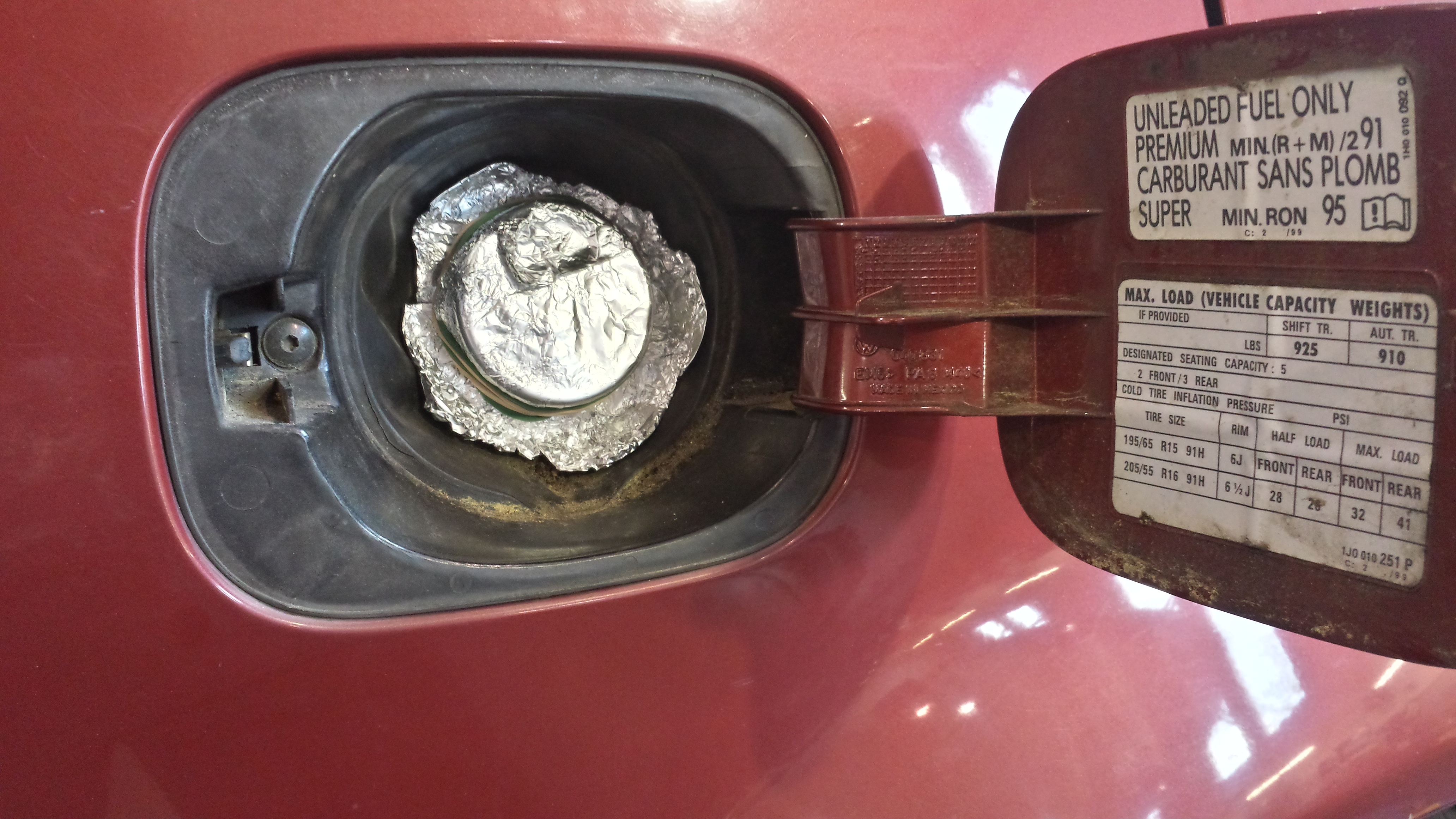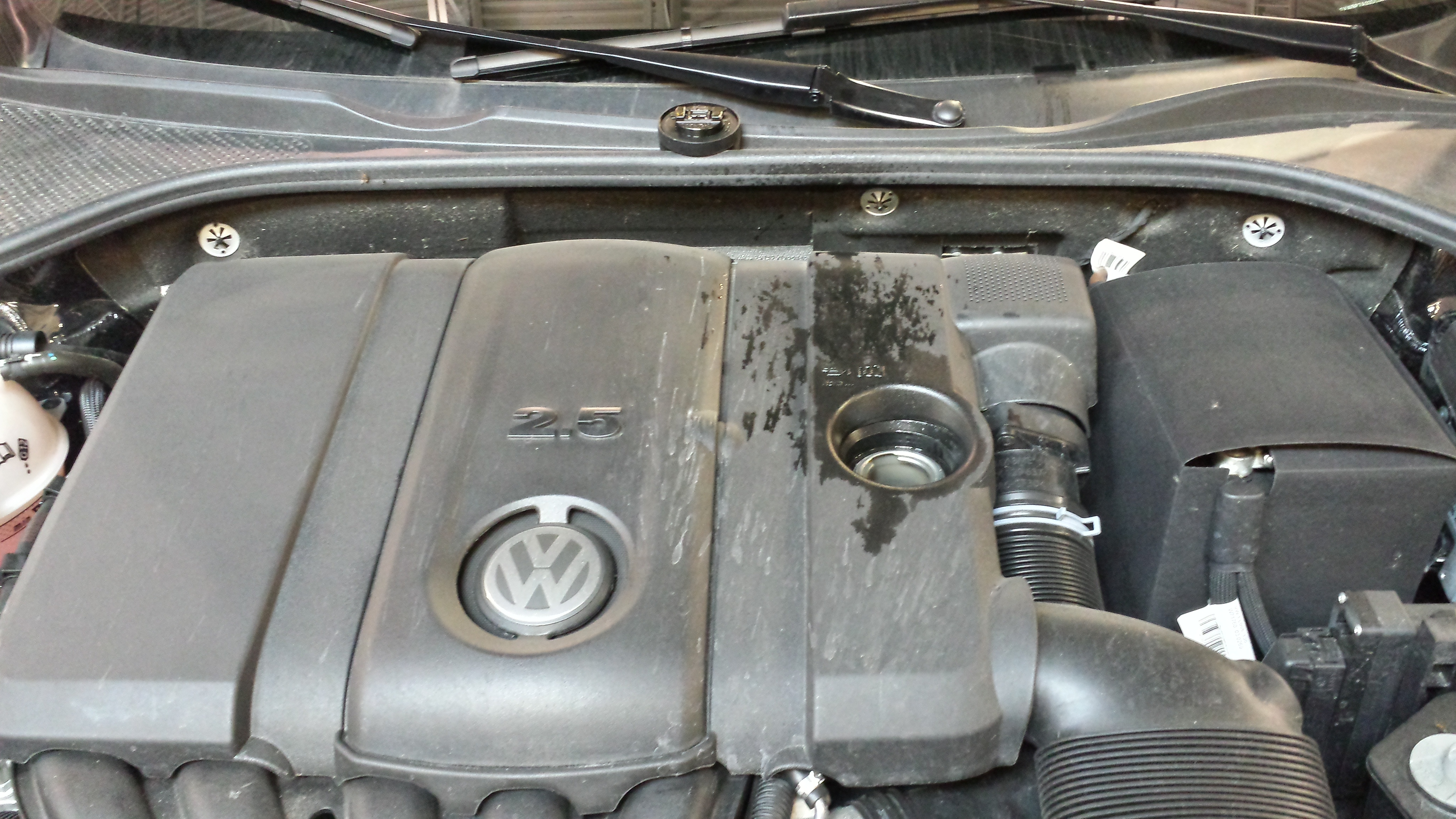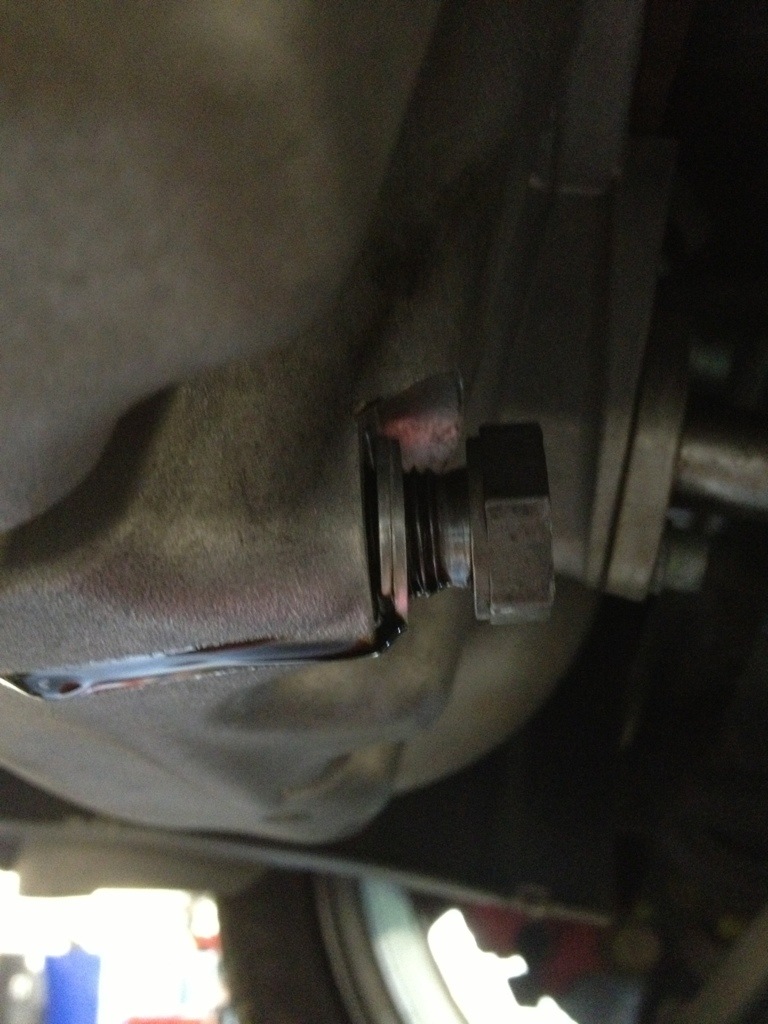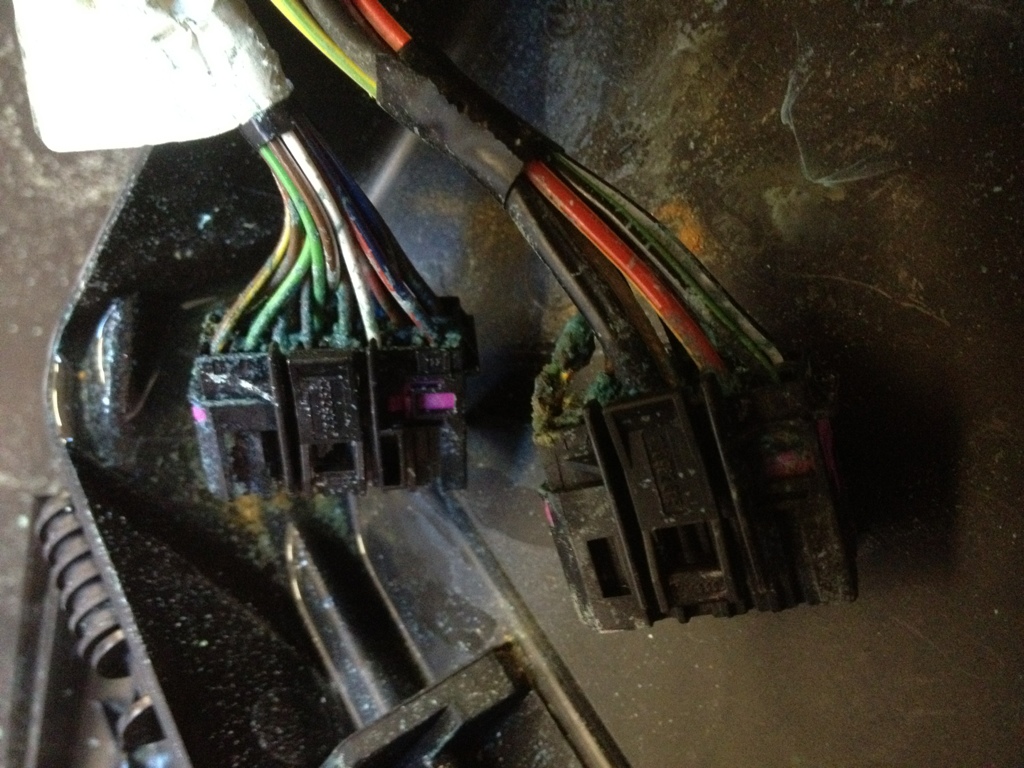Shop Shots Volume 37 Insider Pictures of Automotive Service
It’s Shop Shots time! I hope that you are all having a great Wednesday. Today is my first day back in the shop. I spent the weekend with my wife and one of our dogs in Asheville, NC. It is really one of my favorite places to visit. If you ever have a chance to get out that way, please do it. You will not regret it.
Alright enough about me, let’s get into some of the pictures for this week.
 What you are looking at here is a water leak waiting to happen. This is a pile of leaves on the cowl panel of a VW Jetta Sport Wagon. I have posted pictures of this before, but since the leaves are falling, I wanted to remind you about it. This can cause water to no drain properly. If that happens you can have water run into the car instead of away from the car.
What you are looking at here is a water leak waiting to happen. This is a pile of leaves on the cowl panel of a VW Jetta Sport Wagon. I have posted pictures of this before, but since the leaves are falling, I wanted to remind you about it. This can cause water to no drain properly. If that happens you can have water run into the car instead of away from the car.
Be sure to pop the hood on your car and check for this type of debris build up. A few seconds to check can save on a big repair bill later on. It should come as no surprise that water leaks can get really expensive. I have seen more than one car totaled because of water damage. This is a really easy thing that anyone can check for.
 I am all about saving money and getting good deals. I am also cool with some parts not being factory VW parts. There are times where you must have the right deal. If you put a non factory pollen filter in your car, worst thing that will happen is it will not fit perfect. No big deal. Spark plugs are one of many parts that must be the right thing.
I am all about saving money and getting good deals. I am also cool with some parts not being factory VW parts. There are times where you must have the right deal. If you put a non factory pollen filter in your car, worst thing that will happen is it will not fit perfect. No big deal. Spark plugs are one of many parts that must be the right thing.
This is a picture of an Auto-lite plug. This spark plug costs a dollar or two. Compare that to a factory VW spark plug which can be $20 or more. The dollar savings is crystal clear. However Auto-lite spark plugs don’t work in VW engines. They almost always cause the vehicle to misfire. This is the worst Auto-lite(read this an ought-a-light and in it should work but does not 🙂 ) The plug on the left broke when the tech was taking it out. He had to use an extractor to get the threaded part of the plug out of the cylinder head. Luckily he was able to remove it with no damage to the engine.
 First I have to tell you that I didn’t take this pictures. I got it from a fellow VW technician. I don’t have all the details of the headlight, but it was too awesome to not share. This is a headlight that someone “repaired”. They used expansion foam to make a repair. I am not sure if the clips that held the headlight together broke, or the clips that hold the headlight in place broke. Either way, it is a classic “don’t try this at home”.
First I have to tell you that I didn’t take this pictures. I got it from a fellow VW technician. I don’t have all the details of the headlight, but it was too awesome to not share. This is a headlight that someone “repaired”. They used expansion foam to make a repair. I am not sure if the clips that held the headlight together broke, or the clips that hold the headlight in place broke. Either way, it is a classic “don’t try this at home”.
 Finally I this for you all. This is a shot of the back of intake valves on a 2.0t engine. This car came in because it was misfiring when it was cold. We checked the maintenance and it was all up to date. With our scan tool, we can go in and look to see the conditions the car was under when the check engine light came on. Things like
Finally I this for you all. This is a shot of the back of intake valves on a 2.0t engine. This car came in because it was misfiring when it was cold. We checked the maintenance and it was all up to date. With our scan tool, we can go in and look to see the conditions the car was under when the check engine light came on. Things like
- Engine temperature
- RPM
- Engine load
- Speed
- The gear the transmission was in
- Air temp
- And many other readings
We could not find any other reason that the car would be misfiring. The mechanic next to me removed the intake manifold and found this. Carbon build up on the back of the intake valves. I don’t want to say that this is a common thing, but it is not the first one I have seen. We were able to clean the valves and get this customer back on the road. It is a messy job, but make a world of difference in power and fuel economy.
That does it for another round of Shop Shots. I hope that you all enjoyed the pictures this week. I know I say it all the time, but I love doing theses posts.











People need to remember this when it comes to plugs I have pulled autolites out of vw and bmws 4 times this month. Remember German cars use ngk and Bosch so its not always as easy as going to your parts store if you wanna save a few bucks. Use the time to research which plug your car came with or just go to the dealer. Pcv could cause that misfire with a direct injection car like a 2.0t you don’t have the injector on the outside of the valve to clean it up with fuel.
@r.c. It happens way more than it should. I would say at least get a part number from the dealer. I have seen a lot of plugs be the right brand(ngk or Bosch) but still be wrong.
Only thing worse than buying $15 a piece spark plugs, is having to buy them again because you got the wrong ones.
I’ve been using Bosch plugs for years. In fact, this reminds me to check my plugs to complete my most recent oil change and serpentine belt.
Will be checking them out next week when I (hopefully) change out the synchromesh fluid. I’ve been getting grinding shifting into 3rd gear. 🙁
Ahh, I remember cleaning the intake valves on my Passat 2.0T. They looked just like that.
I did read that dealerships have a system that can spray a very good cleaner directly onto the valves to clean them, so they don’t have to remove the intake manifold. Do you know anything about that? Is that not as efficient as cleaning them by hand?
And what would a good maintenance/prevention program be for this buildup?
@Phil,
I know a fair amount about the system. We worked with our Audi store to find a way to get the valves clean with out taking the manifold off. They did a ton of trials at our Audi store. They had a setup from BG products that worked fairly well.
The problem is it only sem-cleaned cylinders 2 and 3. We had a machine that would atomize a cleaner and fog it into the intake. It worked okay as long as the issue was on cyl 2 or 3.
There is really no substitute for taking the manifold off and cleaning it. I have heard the newest thing is for guys to take the intake off and use a cheap media blaster from Harbor Freight. They tape off under the hood and blast the build up away.
As far as preventing it. That is tough. Make sure you get plenty of full throttle accelerations in(obey all laws). That helps, but I think this is just a product of direct injection like R.C. said.
Wouldn’t fuel injector cleaner or other fuel additive (like SeaFoam) would help prevent the carbon buildup on the valves?
@Mathew,
No. The injector is in the combustion chamber. Fuel never hits the back side of the valves.
Ah yeah, that’s true…
You could create a vacuum leak and suck in a seafoam like product or even use good gasoline. The engine wouldn’t run very well but it could help before valves would end up that dirty. I would think running a catch can set up would prevent this (local emission standards would need to be researched) obviously I speak of cars out of warranty.
Just thinking about this as far as my performance customers go im gonna start recommending water meth more often with tsi and fsi cars.